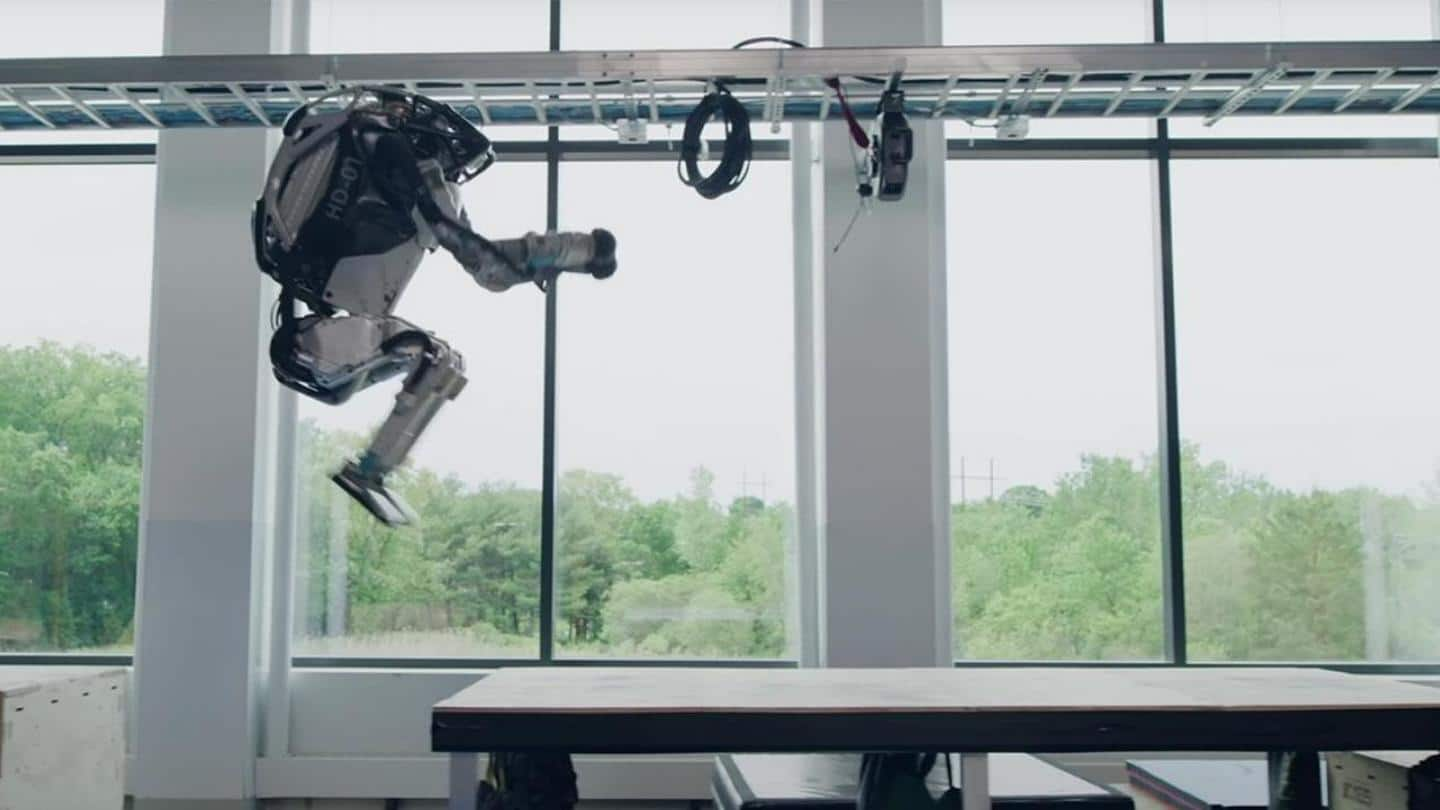
Boston Dynamics flexes its Atlas robot's parkour skills on camera
What's the story
A video of three robots dancing to Do you Love Me went viral on the internet late last year. Now, the company behind those antics, Boston Dynamics, has shown off its creations' mastery over a parkour routine.
Boston Dynamics' new video shows the robots executing flawless backflips, jumping across gaps, and running on beams.
Here are more details.
Twitter Post
Watch the Boston Dynamics Atlas robot's parkour skills here
Parkour is the perfect sandbox for the Atlas team to experiment with new behaviors. Through jumps, balance beams, and vaults, we push Atlas to its limits to discover the next generation of mobility, perception, and athletic intelligence. https://t.co/xZRNVnhrkc pic.twitter.com/E0ssh45ZCi
— Boston Dynamics (@BostonDynamics) August 17, 2021
Old dog
Boston Dynamics also developed the famous yellow Spot robot dog
In the past, Boston Dynamics has won notoriety for creating Spot, the quadruped robot, for industrial inspection and surveillance, although the robot is being used for non-combat army drills as well.
The new Atlas robot is a biped that resembles a human instead of a dog. It has a torso, arms, and legs, seemingly joined just like humans.
Cool shenanigans
Backflip may never prove useful in commercial setting: Boston Dynamics
The latest video shows two Atlas robots broad-jumping a gap, running up and down a flight of makeshift stairs, leaping over a beam, and finally executing two consecutive backflips in unison.
In the project's summary, the robotics firm acknowledged "a backflip may never prove useful in a commercial setting" but Atlas is a research platform and not a commercial product.
Immense scope
If Atlas responds to environments like humans, applications are limitless
Boston Dynamics said that it doesn't take a "great deal of imagination or sector-specific knowledge" to understand Atlas's ability to perform activities like humans. The company added that if Atlas can respond to environments with the dexterity of an adult human, potential applications would be "practically limitless."
According to the Atlas team lead Scott Kuindersma, humanoids capture our vision of go-anywhere do-anything robots.
Intelligence
Robot was dynamically adjusting to its environment in parkour video
In a blog post, Kuindersma explained that the robot from the viral dance video repeated dynamic moves chained together while making critical adjustments on the fly to maintain balance and posture goals, but it wasn't reacting to its environment.
The robot adapted its behavior dynamically for the static environment in the parkour video, so a smaller template of behaviors was pre-programmed.
Why parkour?
Humanoid robots serve as the foundation for future research challenges
Kuindersma added that humanoids like Atlas may not be optimal for particular tasks but they could perform a variety of them since we know for sure that the human form factor is capable of those tasks.
Parkour looks good on camera and also serves as an encapsulation for behaviors humans could teach robots.
Boston Dynamics said this is the foundation for future research problems.